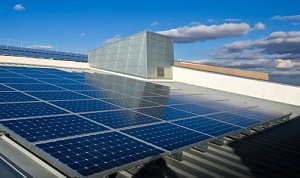New Xcel plan for Colorado may cut major renewable transmission line
 Xcel Energy issued a revised energy plan for Colorado through 2018 that reduces the amount of electric generation it anticipates Colorado will require based on newer population and commercial expectations.
Xcel Energy issued a revised energy plan for Colorado through 2018 that reduces the amount of electric generation it anticipates Colorado will require based on newer population and commercial expectations.
The resulting proposal may be a death knell to the Southern Colorado Transmission Improvements Project, which is planned to carry large loads of renewable energy to demand centers in Colorado. But it is not likely not to affect its solar projects in the state.
Whereas Xcel had expected energy needs in Colorado to grow by 1,000 megawatts over the next seven years, when it filed in 2010, it now projects it will only need 292 more megawatts of electric generation by 2018.
A number of factors contributed to the drastic reduction in anticipated need, the company said. Among the factors it attributed to the change were the recent recession, the weak recovery and potential for slipping into another recession. The company also cited Boulder’s decision to create its own utility and the success of Xcel’s DSM and Solar Rewards programs.
“Our projections for the next couple of year show that we’ll be declining,” said Xcel spokesperson Gabriel Romero. “We’re well ahead of where we should be in terms of renewable energy.”
The change could make Xcel pull out of the transmission project supported by it, Tri-State Generation and the Transmission Association, according to the Pueblo Chieftain.
“The main focus for Xcel Energy is keeping rates low,” Romero said. Supporting the transmission project could raise rates for customers.
The adoption of solar through the company’s Solar Rewards program, which offers home and businesses owners incentives for going solar, has also been strong. That growth is helping to offset the need for further utility-scale projects, according to Romero.
The company also is starting a new solar gardens program, Solar Rewards Community, in Colorado, according to Romero.
“It’s essentially a brand new program with its own funding,” he said.
At this point, the company’s commitment to distributed solar through the Solar Rewards program will also remain the same. Programs like Solar Rewards and its solar gardens project may even be more important if federal tax incentives disappear, he said, since they wouldn’t need the large tax-equity financing that utility-scale solar has needed to support development.
Image courtesy of NREL.



